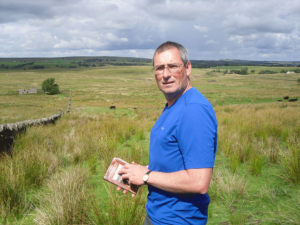Professional Member James Andrew Reilly MICFor explains the drawbacks of clear-felling.
As a silvicultural system, clear-felling has limited utility. Furthermore, its widespread use damages the forestry industry. Its use in the UK was brought about by necessity – the need to secure timber supplies in time of war. With only a small area under forestry, new planting was needed. The same strategic rationale also applied to farming and food security needs, which meant that competition for land was strong. Sites for afforestation were limited to demanding locations with minimal farming potential. These factors limited the choice of tree to hardy pioneer species that grew rapidly.
Many of the strategic and security considerations that have led to our current forest resource have now changed. We have a legacy system, conceived and designed for an entirely different purpose. Our forest industry has adapted to this legacy, when arguably it should be looking to develop and change it. We maintain a rapid growth and high volume clear-fell system which has a number of drawbacks.
Clear-felling makes for poor monotonous landscapes, dominated by a few species of the same age. Landscape changes, when they occur, are sudden and dramatic. Clear-felling and associated mono-cultures are unpopular. Some groups can assert with reason that “forestry (by which they mean tree farming) is apart from conservation, landscaping and ecology”, which of course it is not.
Clear-fells leave soils exposed to erosion. Felled sites can rapidly become weedy and attract insect and animal pests. Felled sites often need to be left fallow for several years to reduce the threat of insect pests. Effort is put into manipulating the site rather than tending the trees. Expenditure occurs early in the rotation and income late. Timber harvesting takes place decades after planting and yields are intermittent. Tree sizes gradually increase, and markets for early thinning are limited. Most of the volume is realised at the end of the rotation. The need to make up for lost time means that we use a few tree species that grow quickly. We end up managing time not forests.
The tree species favoured produce timber with limited quality, suitable only for high volume low-cost applications, and with added value usually realised as part of the manufacturing chain. In such systems scale and volume are important, which is why the state, large companies and wealthy land owners dominate the UK forestry industry. Unlike farming where farmers own or rent farms, very few foresters own or rent ‘commercial’ woodland. Forestry becomes socially dislocated: foresters are employees not owners. This dislocation can be so bad that at times our industry can at end up actively supporting competitor land uses to diffuse tensions. In Scotland, the Forestry Commission Scotland ended up supporting young farmers starting new farm businesses!
Clear-fell systems are intensive and ecologically poor. Mixtures are difficult to manage because of differential rates of growth so mono-cultures are favoured. Ecological solutions are bolted-on (we plant the corners or edges of the plantation with broadleaf trees): ecological management is not integral to the system. Forests end up being compartmentalised, with areas of production separated from areas of conservation.
Optimisation is important to clear-fell systems, because upfront costs have a disproportionate effect on its economics. Maximising production, speed of growth and rapidity of harvesting are products of the system. The penalty is lower quality, which is why large volumes of half-wagon loads of timber are left scattered across UK forests, since small volumes are just not worth the effort. Waste is high because quality is low. Cost and efficiency have become disproportionate considerations.
Optimised systems are also vulnerable systems. Optimal systems lack reserve and redundancy: their economics have simply created an environment were little or no spare capacity exists. With issues like climate change and the threat from new pests and diseases alarm bells should be ringing.
Alternatives to clear-fell are available and are gaining traction. Diversifying the types of tree planted, encouraging regeneration, normalising forest production, maintaining mixtures, using continuous cover and quality over quantity should be our aim.
Alternative silvicultural systems can comprehensively address the weaknesses outlined above. However, it is important that the focus remains on primary activities like timber production which stresses quality over quantity. Secondary environmental service activities, soil and watershed protection and landscape etc. are integral to many continuous cover systems: unlike clear-fell they are not ‘bolted on’. In addition, smaller woodland units become economically viable because they concentrate on low-volume, high-quality high price products.
Clear-felling has its place, but most UK forests can run better systems. Many of the advantages associated with clear-fell systems are in fact solutions to the unique problems clear-fell systems create. Long periods between tree planting and harvesting, sporadic incomes from thinning, and discounting are not a reason for or a justification of clear-felling: they are its symptoms. Adopting new systems which focus on quality and normal production will solve several problems. Diversity, quality, social inclusion, and a better ecological landscape are possible if we opt for quality over quantity.
Disclaimer: The views and opinions expressed in this article are those of the author and do not necessarily reflect the views of the Institute of Chartered Foresters.






